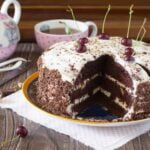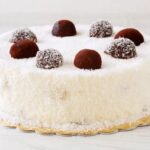Are you wondering how to store cakes before decorating? Properly storing cakes is crucial in ensuring the final result meets your expectations. The way you store your cake can impact its freshness, texture, and overall quality when it comes time to decorate. Whether you’re a professional baker or just getting started with cake decorating, understanding the best practices for storing cakes is essential for success.
When it comes to properly storing cakes, there are several key factors to consider, from choosing the right container to determining whether refrigeration or freezing is best. All of these factors can play a significant role in the outcome of your decorated cake. In this article, we will explore each aspect of cake storage and provide valuable tips on how to ensure your cake remains fresh and ready for decorating.
By following the recommendations outlined in this article, you can effectively prepare your cakes for decorating and avoid potential issues that may arise from improper storage. From selecting the right container to troubleshooting common concerns, we’ll cover everything you need to know about how to store cakes before decorating for a successful and enjoyable baking experience.
Choosing the Right Container
Properly storing cakes before decorating is crucial to ensure that the final result is as delicious and visually appealing as possible. Choosing the right container to store your cake in can make a significant difference in its freshness and overall quality. Here are some options for the best types of containers to store cakes in:
- Cake Boxes: These are a convenient option for storing cakes, especially if you plan to transport them. They come in various sizes and can be easily labeled for identification.
- Airtight Containers: These containers help preserve the moisture of the cake, preventing it from drying out. They are especially useful for storing cakes with delicate textures or fillings.
- Cake Caddies: These specialized containers are designed specifically for storing and transporting cakes. They often come with handles and secure latches to keep the cake safe during travel.
It’s essential to consider the size of your cake when choosing a container, ensuring that there is enough room for the cake without squishing it or causing damage. Additionally, if using a reusable container, make sure it is thoroughly cleaned and dried before placing the cake inside to avoid any contamination.
When considering how to store cakes before decorating, selecting the right container is just as important as other factors such as cooling the cake properly and wrapping it securely to maintain its freshness. By choosing the appropriate container based on your specific needs, you can ensure that your cake remains perfectly stored until you’re ready to decorate it.
Remember that proper storage helps in maintaining the overall quality of your baked goods, which will ultimately impact their taste and appearance once decorated. Now that you’ve learned about choosing the right container for storing cakes, let’s move on to discussing how to cool the cake properly before placing it in that chosen container.
Cooling the Cake
After baking a delicious cake, it is crucial to allow it to cool completely before storing it. If the cake is not properly cooled, condensation can form inside the storage container, leading to a soggy and unappealing cake. Additionally, storing a warm cake can also promote the growth of bacteria, potentially causing foodborne illness. Therefore, taking the time to properly cool your cake is essential for maintaining its quality and freshness.
Properly Cooling a Cake
To properly cool a cake, start by removing it from the oven and allowing it to rest in the pan for about 10-15 minutes. After this initial cooling period, carefully transfer the cake from the pan onto a wire cooling rack. This will allow air to circulate around the entire cake, promoting even cooling. It’s important to ensure that the cake is placed on a heat-resistant surface to prevent any damage.
Next, let the cake cool at room temperature until it reaches room temperature. This can take anywhere from 1-2 hours depending on the size and thickness of the cake. Avoid placing the warm cake in a sealed container or wrapping it, as this can trap steam and moisture inside, leading to a soggy texture.
The Importance of Allowing the Cake to Cool Completely
Allowing the cake to cool completely before storing it is crucial for preserving its freshness and texture. Rushing this step can result in condensation forming inside the storage container, which can lead to a mushy or sticky outer layer on your cake.
Additionally, frosting or decorations applied to a warm cake may melt or become misshapen due to excess heat. Taking the time to properly cool your cake ensures that it will be in perfect condition when you are ready to decorate and serve it.
By following these steps for properly cooling your cakes before storing them, you can ensure that they maintain their quality and are ready for decorating whenever you are prepared.
Wrapping the Cake
Properly wrapping a cake is crucial to prevent it from drying out and maintaining its freshness before decorating. The way a cake is wrapped can significantly impact its final texture and taste, so it’s important to follow the right steps.
Choosing the Right Wrapping Material
When it comes to wrapping a cake, using the right material is essential. Plastic wrap is a popular choice for wrapping cakes as it creates an airtight seal, preventing the cake from drying out. Alternatively, aluminum foil can also be used to wrap the cake and keep it fresh. Make sure to wrap the cake tightly to minimize air exposure and maintain its moisture.
Preventing Condensation
One common issue when wrapping a cake is condensation, which can lead to moisture buildup on the surface of the cake. To prevent this, allow the cake to cool completely before wrapping it. Additionally, if you’re using plastic wrap, ensure that the cake is at room temperature or slightly chilled before wrapping it to minimize condensation.
Labeling and Storage
After wrapping the cake, be sure to label it with the date of preparation and any specific instructions for storage. This will help you keep track of how long the cake has been stored and ensure that it is used within an appropriate timeframe. Once labeled, store the wrapped cake in a cool, dry place away from direct sunlight and odors that could affect its flavor.
By following these simple steps for properly wrapping a cake before decorating, you can ensure that your baked creation stays fresh and delicious for as long as possible. Whether refrigerating or freezing your cake before decorating, proper wrapping plays a crucial role in preserving its quality until you’re ready to add those finishing touches.
Refrigerating vs Freezing
When it comes to storing cakes before decorating, one common dilemma is whether to refrigerate or freeze the cake. Both options have their pros and cons, so it’s important to understand how to properly do both in order to maintain the quality of the cake before decorating.
Refrigerating a cake is a great option if you plan to decorate within a few days. It helps keep the cake moist and fresh, especially if it has perishable fillings or frostings.
To properly refrigerate a cake, place it in an airtight container or wrap it tightly in plastic wrap to prevent any odors from being absorbed. It’s important to note that certain cakes, such as those with delicate decorations or whipped cream frosting, may not be suitable for refrigeration as they can become soggy.
On the other hand, freezing a cake is ideal if you need to store it for an extended period before decorating. Cakes can typically be frozen for up to three months without compromising taste or texture.
To properly freeze a cake, ensure that it has cooled completely and wrap it tightly in several layers of plastic wrap followed by aluminum foil. When thawing frozen cakes, allow them to defrost in the refrigerator overnight to prevent condensation from forming on the surface.
In summary, refrigerating is best for short-term storage, while freezing allows for longer-term storage without sacrificing taste or texture.
| Refrigerating | Freezing |
|---|---|
| Ideal for short-term storage (a few days) | Ideal for long-term storage (up to three months) |
| Keeps cake moist and fresh | Prevents compromise on taste or texture |
| Suitable for cakes with perishable fillings/frostings | Cooled completely before wrapping tightly in plastic/aluminum foil |
Storage Duration
When it comes to storing cakes before decorating, it’s essential to understand how long they can be safely stored and the factors that can impact their shelf life. The duration for which a cake can be stored before decorating depends on various factors such as ingredients, fillings, and environmental conditions. Understanding these factors is crucial in ensuring the quality and freshness of the cake when it’s time to decorate.
The shelf life of a cake before decorating can vary based on its ingredients. Cakes with perishable fillings or toppings, such as fresh fruit or cream, should be consumed or decorated within a shorter timeframe compared to cakes with non-perishable ingredients like fondant or buttercream.
Additionally, cakes that contain dairy products have a shorter shelf life than those with no dairy content. It’s important to take into account these factors when deciding how long to store a cake before decorating.
Another consideration for storage duration is the environmental conditions in which the cake is kept. Cakes stored in hot and humid environments are more prone to spoilage compared to those stored in cool, dry areas. Understanding how temperature and humidity can affect the shelf life of a cake is essential for maintaining its freshness and quality before decorating.
In order to properly store cakes before decorating while taking into account these factors, it’s crucial to use proper techniques such as refrigeration or freezing. While some cakes can be safely stored at room temperature for a short period of time, others may require refrigeration or freezing to extend their shelf life.
By understanding how different storage methods can impact the duration for which a cake can be safely stored before decorating, you can ensure that your cakes remain fresh and delicious when it’s time to decorate them.
| Factor | Impact on Shelf Life |
|---|---|
| Ingredients | Determines how quickly the cake will spoil |
| Environmental Conditions | Affects the rate of spoilage based on temperature and humidity |
| Storage Methods | Determines whether refrigeration or freezing is necessary for longer shelf life |
Preparing for Decorating
After properly storing a cake before decorating, it’s important to take the necessary steps to prepare it for the decorating process. One of the key aspects of preparing a stored cake is bringing it to room temperature.
This allows the cake to thaw if it has been frozen and helps the frosting adhere better to the surface. To bring a refrigerated cake to room temperature, simply remove it from the refrigerator and let it sit at room temperature for about 1-2 hours, depending on the size of the cake.
In addition to bringing the cake to room temperature, there may be other additional steps necessary before decorating. For example, if the cake has been stored in airtight packaging, there may be condensation or moisture build-up on the surface of the cake once it is brought to room temperature. In this case, gently blotting the excess moisture with a paper towel can help prevent any potential issues with frosting adhesion.
Another important step in preparing a stored cake for decorating is to ensure that any fillings or layers are well-set and firm. If a cake has been stored for an extended period of time, fillings may have softened or shifted during storage. It’s essential to check that everything is stable and secure before beginning the decorating process.
Properly preparing a cake for decorating after storing it not only ensures that it will be easier to work with but also contributes to achieving a professional-looking final result. By following these tips on bringing cakes to room temperature and taking any additional necessary steps after storage, decorators can set themselves up for success when they begin decorating their cakes.
Troubleshooting
When it comes to storing cakes before decorating, there are a few common issues that may arise. Addressing these concerns is important in order to ensure that the cake remains fresh and in optimal condition for decoration. Here are some common issues and how to troubleshoot them:
1. Condensation: One common issue that may occur when storing cakes in the refrigerator or freezer is condensation forming on the cake. This can lead to soggy or mushy areas on the cake, which can make it difficult to decorate.
To prevent condensation, it’s important to properly wrap the cake before storing it. Use plastic wrap or aluminum foil to tightly seal the cake, and if necessary, place it in an airtight container to further prevent moisture from affecting the cake.
2. Frosting Concerns: If you’ve already frosted your cake before storing it, you may encounter issues with the frosting becoming discolored or misshapen during storage.
To prevent this, consider freezing the cake without frosting and only apply the frosting after thawing. If you must store a frosted cake, place it in the freezer for a short period of time to allow the frosting to harden before wrapping and transferring it to long-term storage in an airtight container.
3. Texture Changes: Another common issue that can arise when storing cakes before decorating is changes in texture due to improper storage conditions. For example, if a cake is not properly cooled before being wrapped and stored, it may develop excess moisture within its crumb structure while cooling down in an enclosed environment. Always allow your cakes to cool completely at room temperature before wrapping them for storage.
In summary, understanding how to troubleshoot common issues when storing cakes before decorating is crucial for maintaining the quality of your cakes. By addressing concerns such as condensation, frosting problems, and texture changes, you can ensure that your cakes remain fresh and ready for beautiful decorations once you’re ready to adorn them with your favorite icing designs.
Conclusion
In conclusion, it is clear that properly storing cakes before decorating plays a crucial role in achieving the best results. From choosing the right container to refrigerating versus freezing, each step in the cake storage process impacts the overall quality of the final product. By following the tips and guidelines outlined in this article, readers can ensure that their cakes remain fresh, moist, and ready for decorating when the time comes.
The choice of container is essential for keeping cakes fresh and protected from outside elements. Whether using a cake box, airtight container, or cake caddy, selecting the right storage option can make a significant difference in maintaining the cake’s texture and flavor. Additionally, understanding how to properly cool and wrap a cake can further contribute to its longevity and overall quality.
When considering how to store cakes before decorating, it is important to take into account factors such as storage duration and preparing the cake for decorating. Knowing how long cakes can be safely stored and understanding any additional steps required before beginning the decorating process will set bakers up for success. By being mindful of these key points, bakers can ensure that their cakes are at their best when it’s time to decorate them.
Frequently Asked Questions
What Is the Best Way to Store Cake Before Frosting?
The best way to store cake before frosting is to let it cool completely on a wire rack, then wrap it tightly in plastic wrap or aluminum foil to prevent it from drying out. This will keep the cake moist and fresh.
Should I Put My Cake in the Fridge Before Decorating?
It is not necessary to put your cake in the fridge before decorating, unless the recipe specifically calls for it or if your kitchen is very warm. Cooling the cake in the fridge can make it easier to work with when frosting, but be sure to let it come back to room temperature before serving.
How Do You Keep a Cake Moist Overnight Before Frosting?
To keep a cake moist overnight before frosting, you can brush simple syrup or sugar water on the layers, wrap them tightly in plastic wrap, and store them at room temperature. Another method is to place a slice of bread on top of the cakes while they are wrapped, as the bread will help retain moisture.

Welcome to my blog about home and family. This blog is a place where I will share my thoughts, ideas, and experiences related to these important topics. I am a stay-at-home mom with two young children. I hope you enjoy reading it! and may find some helpful tips and ideas that will make your home and family life even better!





